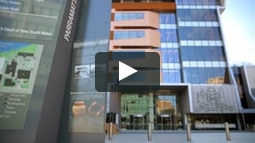Profiting Off of Our Prisoners
According to a report by Sentencing Project titled International Growth Trends in Prison Privatization, Australia has the highest number of inmates in privately operated prisons than anywhere else in the world.
The “prison-industrial complex” is a powerful billion dollar industry and one of the top profit industries in the world. Statistics from the Australian Government Productivity Commission show that in 2015 almost 19% of all prisoners in Australia were contained in privately run correction facilities. That is twice as many as in the U.S, which housed just over 8 per cent of prisoners in for-profit prisons in 2014.
Under the influence of global corporate giants like Geo Group and Serco (two of the world’s largest providers of correction and detention services), the prison privatisation market is continuing to grow in Australia with private run prisons in NSW, Queensland, Victoria, Western Australia and South Australia.
Corporate run prisons in Australia include:
- Immigration Detention Centres, onshore and offshore (Serco and Transfield)
- Acacia Prison Western Australia (Serco)
- Wandoo Young Adult Facility, Western Australia (Serco)
- Junee Correctional Centre, NSW (Geo Group)
- Parklea Correctional Centre, NSW (Geo Group)
- Arthur Gorrie Correctional Centre, Queensland (Geo Group)
- Borallan Correctional Centre, Queensland (Serco)
- Southern Queensland Correctional Centre (Serco)
- Mt Gambier Prison, South Australia (G4S)
- Fulham Correctional Centre, Victoria (Geo Group)
- Port Phillip Prison, Victoria (G4S).
The cost of private prisons
Private prisons promise to save governments money by privatizing their correction operations, but at what cost? Evidence mounts that focusing on profits instead of prisoners’ interests is resulting in ever increasing human rights abuses in privately operated detention centres across Australia. As The Economist reported in 2010, this is because the need for profit runs counter to the purpose of prisons – the humane containment and rehabilitation of prisoners.
As an example, it was reported that understaffing contributed to the “serious culture of violence” that led to crisis at Mt. Eden Prison. A prison that was run by Serco in New Zealand at the time (Source: Serco Watch). In 2013, Serco was fined $50,000 for failing to control prisoners.
Instead of saving the government money, some critics argue that privately owned gaols not only lead to higher incarceration rates, they actually cost governments more when they are billed more than the firm’s initial low ball bid, or there scrimping in other ways that result in inadequate services and unsafe conditions.
Private prisons have a vested interest in increasing incarceration rates and lobbying for harsh sentencing practices due to the need for a steady flow of prisoners in order to maintain profits. For example, Serco Watch in a May 19 post criticised the NSW Liberal Government for appointing a Senior Executive for Serco to oversee market testing of prisons in NSW and said the Senior Executive “used his role at a NSW tertiary institution to influence NSW Government policy to deliver more privatisation and outsourcing of public services and functions to corporations like Serco.”
The end result critics highlight has been the Goverment’s “war on drugs” and “tough on crime” policies including extensive use of mandatory minimum sentencing.
The incentive to make money contradicts the very purpose of corrective services. Instead of providing a safe, secure and humane custodial environment, private prisons lead to longer sentences and overcrowding. According to the Australian Bureau of Statistics, there are approximately 40,577 prisoners currently in custody in Australia, an increase of 38 per cent from five years ago.
Longer sentences, a larger prison population, fewer services and cheaper facilities equal more profits. This conflict of interest between the objectives of corrective services and those that maximize profit and growth, critics argue lead to more and more cutbacks in anything from staffing and security to the medical care of prisoners.
Prison privatisation and our immigration policies
Unfortunately the need to increase our prison population critics argue has led to a stronger immigration policy as well, as immigration detention centres become a rapid growth market for the private prison corporations.
With the push for more privatised prisons, it does not look like rehabilitating prisoners, reducing crime or improving “services” is on anyone’s list of priorities. Instead it looks like it is just about keeping jails full so that big business can make a few more bucks off the backs of our prisoners.







